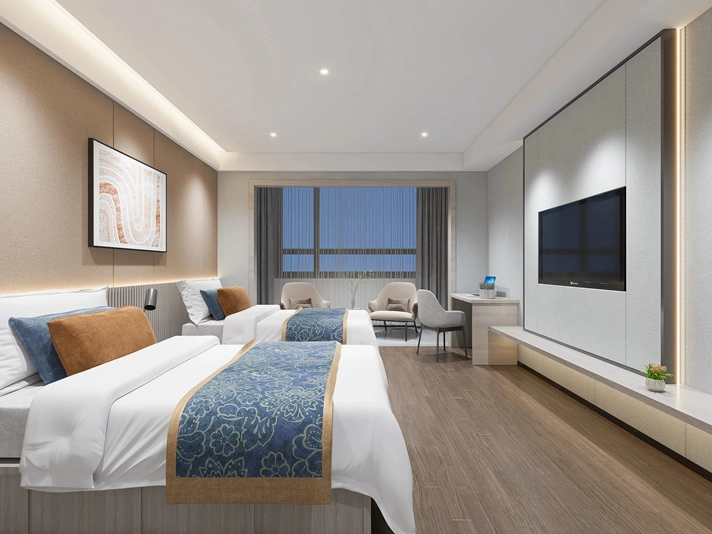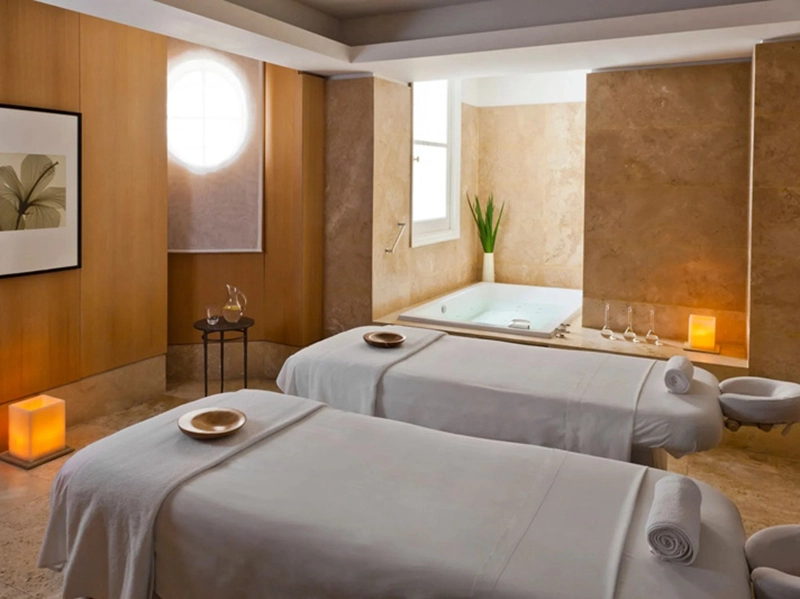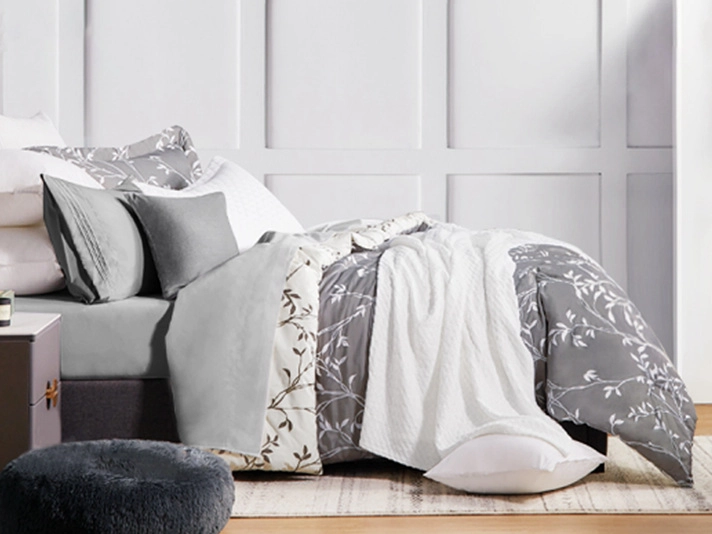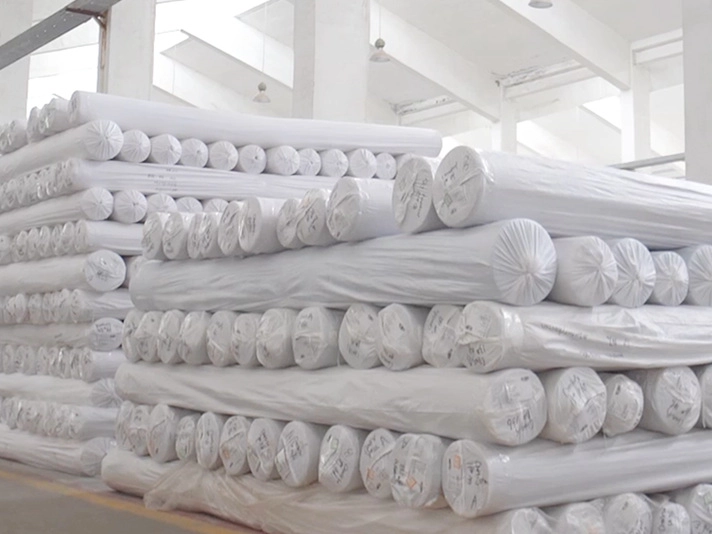Luxury Linen Bed Sheets: Organic Comfort & Durable Quality
Introduction to High-Performance Linen Bed Sheets for B2B Applications
In the discerning B2B market, particularly within hospitality, healthcare, and high-end residential sectors, the choice of bedding materials significantly impacts guest satisfaction, operational longevity, and brand reputation. Among the premium options available, linen bed sheets stand out for their exceptional durability, thermal regulation properties, and distinctive aesthetic appeal. Derived from the flax plant, linen fabric offers a unique combination of strength and softness that improves with age and use, making it a compelling investment for businesses prioritizing comfort and sustainability. This comprehensive overview delves into the technical aspects, market dynamics, and operational benefits of incorporating high-quality linen bedding into diverse commercial environments, complementing other essential bedding accessories such as the Quilted Elastic Fitted Waterproof Mattress Protector, ensuring a complete and luxurious sleep solution.
The demand for natural, eco-friendly, and durable textiles is on a steady rise, positioning linen as a frontrunner in premium bedding. This article will provide a detailed exposition of the manufacturing processes, technical specifications, application advantages, and strategic considerations for B2B procurement of these superior linen bed sheets. We aim to equip decision-makers and procurement specialists with the insights necessary to make informed choices that enhance user experience and operational efficiency.
Industry Trends and Market Dynamics
The global bedding market is experiencing significant shifts driven by consumer preferences for sustainability, health, and luxury. Reports indicate a growing CAGR (Compound Annual Growth Rate) in the luxury bedding segment, with natural fibers leading the charge. Linen, with its inherent eco-friendly attributes and hypoallergenic properties, is perfectly positioned to capture this market expansion. According to Grand View Research, the global bed linen market size was valued at USD 25.56 billion in 2022 and is expected to grow at a CAGR of 6.2% from 2023 to 2030, with increasing demand for premium and personalized products.
Key trends influencing B2B procurement include:
- Sustainability & Traceability: Demand for materials with verifiable sustainable sourcing and manufacturing processes, such as OEKO-TEX certified linen or GOTS certified organic cotton sheets.
- Health & Wellness: Increased focus on hypoallergenic, antimicrobial, and breathable fabrics, benefiting linen's natural properties.
- Durability & Longevity: Businesses seek investments that withstand rigorous commercial laundering, reducing replacement cycles and overall cost of ownership. Linen’s inherent strength makes it an ideal choice for durable bedsheets.
- Luxury & Comfort: The rising expectation for premium experiences in hospitality and residential sectors drives the adoption of luxury sheets and high-quality sheet sets.
- Customization: Growing need for bespoke solutions in terms of size, color, weave, and branding for distinct establishments.
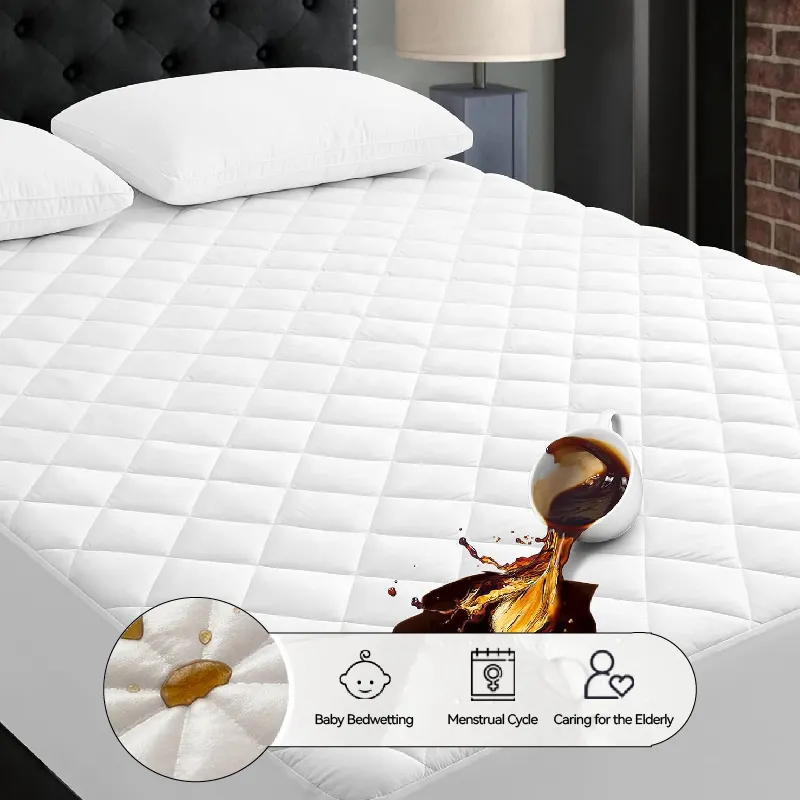
Manufacturing Process of Linen Bed Sheets
The production of high-quality linen bed sheets involves a meticulous series of steps, ensuring the fiber's natural characteristics are preserved and enhanced for textile applications. This process begins with the cultivation of flax plants and culminates in the finished fabric.
Process Flow Overview:
1. Flax Cultivation & Harvesting
Flax (Linum usitatissimum) is grown in temperate climates. Harvesting is typically done by pulling the entire plant from the ground, rather than cutting, to preserve the full length of the fibers.
↓2. Retting
A natural decomposition process (dew retting or water retting) that uses moisture and microorganisms to break down the pectin binding the fibers to the woody stalk. This is crucial for fiber separation.
↓3. Breaking & Scutching
Machines break the dried stalks, then scutching removes the woody parts (shives) from the long, fine linen fibers. Shorter fibers become tow, while longer fibers are line fibers.
↓4. Heckling & Spinning
Fibers are combed (heckled) to align them and remove impurities. These clean, parallel fibers are then spun into yarn, with various fineness levels for different fabric types.
↓5. Weaving
Linen yarns are woven into fabric on looms, typically using plain weave or twill weave patterns to create different textures and durability levels for bedsheets.
↓6. Finishing & Dyeing
Fabric undergoes processes like desizing, scouring, bleaching, mercerization (optional, for strength/luster), and dyeing. Strict quality control ensures colorfastness and fabric integrity.
↓7. Cutting & Sewing
The finished fabric is cut according to specific dimensions for flat sheets, fitted sheets, and pillowcases. Precision sewing ensures durable seams and accurate sizing for sheet sets.
Testing Standards: Throughout this process, adherence to international testing standards is paramount. Key standards include:
- ISO 9001: For quality management systems in manufacturing.
- OEKO-TEX Standard 100: Certifies that textiles are free from harmful substances, crucial for direct skin contact products like bedding.
- GOTS (Global Organic Textile Standard): For linen derived from organically grown flax, covering ecological and social criteria.
- ASTM D3776: Standard test method for mass per unit area (weight) of fabric.
- ASTM D1424: Standard test method for tear strength of fabrics.
- ASTM D5034: Standard test method for breaking strength and elongation of textile fabrics (grab test).
The service life of premium linen bed sheets, when properly cared for, can extend significantly beyond that of conventional cotton, often lasting 5-10 years even in commercial environments, showcasing its exceptional value.
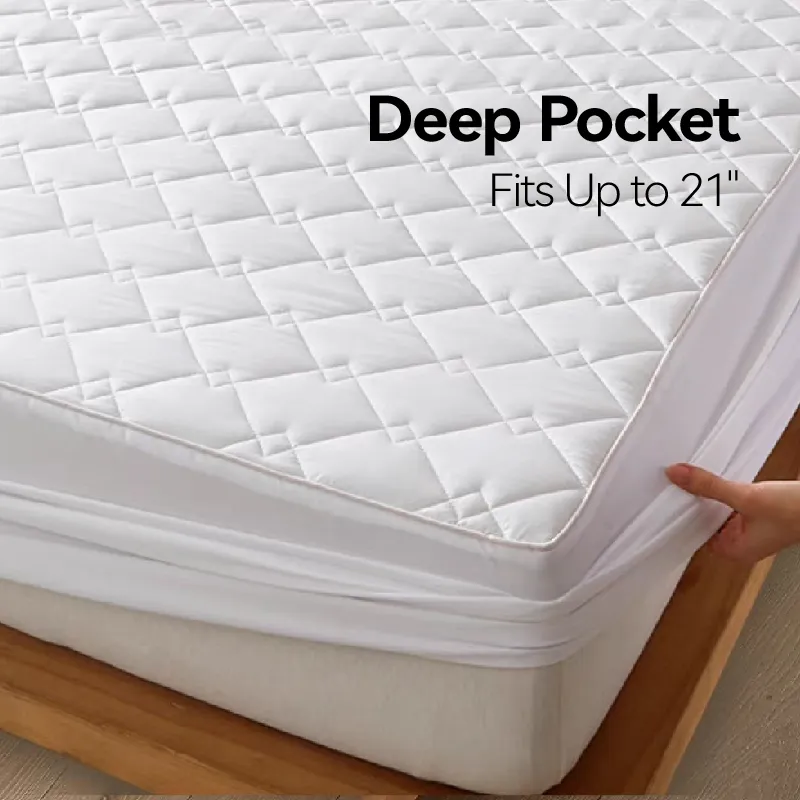
Technical Parameters and Specifications
Understanding the technical specifications of linen bed sheets is vital for B2B clients to ensure product suitability for their intended application and to guarantee performance longevity. Linen fibers are characterized by their cellular structure, which contributes to their unique properties.
Key Material Characteristics:
- Cellulose Composition: Predominantly cellulose (around 70%), with smaller amounts of hemicellulose, pectin, and lignin. This gives linen its strength and absorbency.
- Fiber Length: Typically 20-50 cm, significantly longer than cotton fibers, contributing to yarn strength and minimal linting.
- Tenacity (Strength): Linen is one of the strongest natural fibers, particularly when wet (up to 20% stronger wet than dry), making it highly resistant to abrasion and tearing during washing.
- Moisture Regain: High moisture absorbency (up to 20% of its weight without feeling damp), excellent wicking properties, and quick-drying, promoting thermal comfort.
- Thermal Conductivity: Higher than cotton, leading to its characteristic cool feel in warm climates.
- Pilling Resistance: Excellent resistance to pilling due to long, smooth fibers.
- Hypoallergenic: Naturally resistant to dust mites, bacteria, and fungi, making it ideal for sensitive users.
Typical Product Specifications for Premium Linen Bed Sheets:
| Parameter | Specification for Premium Linen | Technical Rationale |
|---|---|---|
| Material Composition | 100% European Flax Linen | Ensures superior fiber quality and ethical sourcing, often certified. |
| GSM (Grams per Square Meter) | 160 - 200 GSM | Optimal balance of durability, breathability, and drape. Higher GSM for heavier, more robust sheets. |
| Yarn Count (Metric) | Nm 10-30 | Indicates yarn fineness; higher Nm means finer yarn, resulting in softer fabric. |
| Tensile Strength (Warp/Weft) | >400 N / >350 N (ASTM D5034) | Measures resistance to breaking under tension, critical for longevity in commercial use. |
| Tear Strength (Warp/Weft) | >30 N / >25 N (ASTM D1424) | Indicates resistance to tearing, important for industrial laundering and daily wear. |
| Pilling Resistance | Grade 4-5 (ISO 12945-2) | Excellent resistance means minimal fiber balls forming on the surface, maintaining aesthetic and comfort. |
| Shrinkage (Wash) | < 3% | Controlled shrinkage ensures consistent sizing after repeated industrial washes. |
| Colorfastness to Washing | Grade 4-5 (ISO 105-C06) | Maintains color integrity over many wash cycles, crucial for brand consistency. |
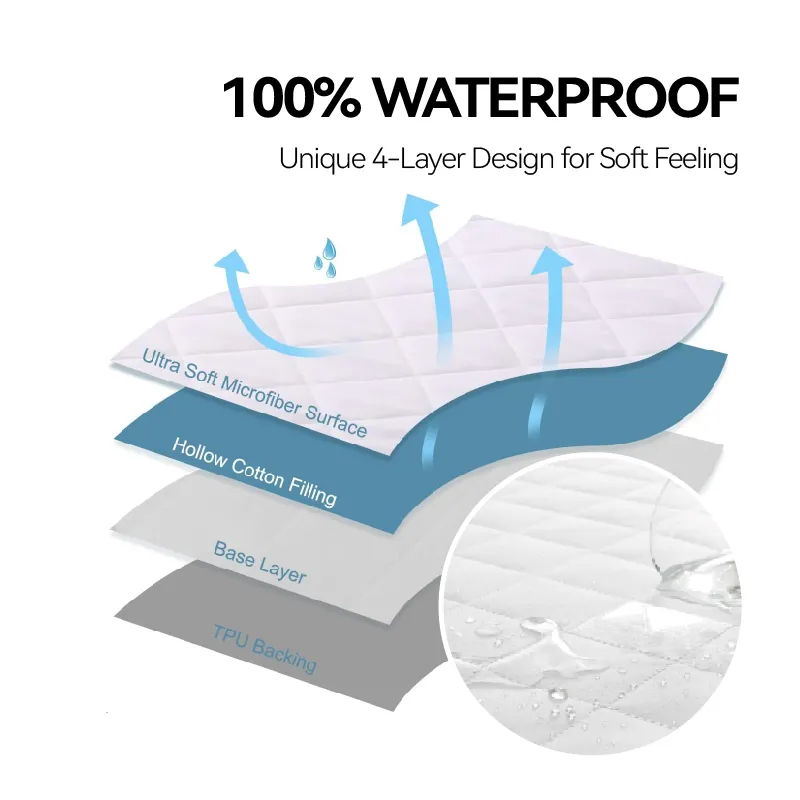
Technical Advantages in Application Scenarios
The superior technical characteristics of linen bed sheets translate into significant advantages across various B2B application scenarios, offering both tangible and intangible benefits.
Target Industries & Specific Benefits:
-
Hospitality (Luxury Hotels, Resorts, Boutique Accommodations):
Linen provides an unmatched guest experience through its luxurious feel, breathability, and distinctive aesthetic. Its natural temperature-regulating properties ensure comfort in diverse climates, reducing the need for excessive air conditioning or heating, thus contributing to energy saving. The exceptional durability reduces replacement costs and laundry strain compared to standard cotton options.
-
Healthcare (Premium Clinics, Wellness Centers):
Linen's inherent hypoallergenic and antimicrobial properties create a healthier sleeping environment, crucial for patient well-being. Its ability to withstand frequent high-temperature washing without degradation ensures superior hygiene and sterilization, critical for infection control. Furthermore, its smooth, non-irritating texture is gentle on sensitive skin.
-
High-End Residential Developments & Furnished Rentals:
For property developers and luxury rental providers, investing in luxury sheets like linen enhances the perceived value and comfort of the property. Its long service life and easy care reduce maintenance overheads for property management. The sophisticated, relaxed aesthetic of linen also aligns with modern interior design trends.
-
Retail (Specialty Bedding Stores, Interior Designers):
Offering linen bedding differentiates a retail business, catering to customers seeking premium, sustainable, and high-performance textiles. Its unique selling points, such as becoming softer with each wash and natural wrinkle, are attractive to discerning consumers.
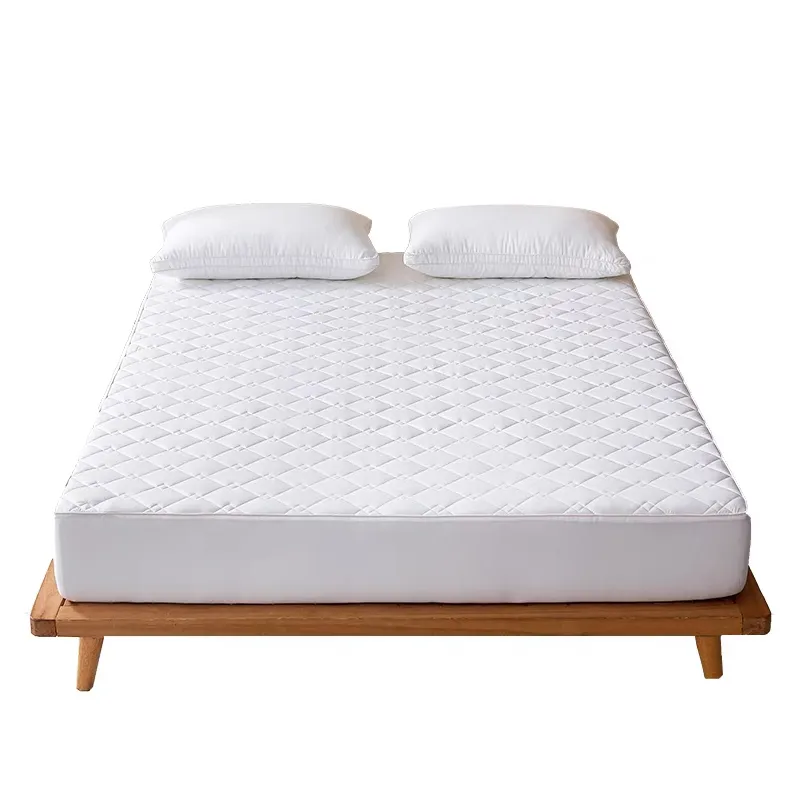
Vendor Comparison: Linen vs. Other Premium Bedding Materials
When sourcing premium bedsheets for B2B applications, comparing material properties and vendor capabilities is crucial. While organic cotton sheets offer a soft and sustainable alternative, linen presents distinct advantages, especially in terms of durability and thermal regulation.
Comparative Analysis of Premium Bedding Materials:
| Feature | Linen Bed Sheets | Egyptian/Pima Cotton | Tencel/Lyocell |
|---|---|---|---|
| Fiber Source | Flax Plant | Cotton Plant | Eucalyptus Wood Pulp |
| Durability & Longevity | Excellent; strong, improves with age. 5-10+ years commercial life. | Very Good; depends on thread count and weave. 2-5 years commercial life. | Good; generally durable. 3-6 years commercial life. |
| Thermal Regulation | Exceptional; highly breathable, cooling in summer, insulating in winter. | Good; breathable, but can retain more heat than linen. | Very Good; moisture-wicking and breathable. |
| Softness & Texture | Crisp initially, softens significantly with each wash; characteristic relaxed drape. | Very soft, especially high thread counts; smooth. | Extremely soft, silky feel. |
| Hypoallergenic Properties | Naturally hypoallergenic, antimicrobial. | Can be, but less inherent resistance to dust mites/allergens. | Generally hypoallergenic. |
| Wrinkle Tendency | High, characteristic of natural linen. | Moderate to low, depending on weave and finish. | Low. |
| Sustainability Footprint | Low water/pesticide use, natural retting, highly biodegradable. | Higher water/pesticide use than linen (unless organic). | Closed-loop production, good sustainability. |
| Price Point (B2B) | High (initial investment) | Medium-High | Medium-High |
Vendor Selection Criteria:
When selecting a supplier for luxury sheets or bulk sheet sets, B2B clients should evaluate:
- Certifications: Look for OEKO-TEX Standard 100, GOTS, European Flax certification to ensure quality and ethical production.
- Experience & Specialization: Vendors with extensive experience in natural fibers and B2B textile supply understand commercial needs.
- Customization Capabilities: Ability to provide specific sizes, colors, weaves, and branding options.
- Lead Time & Logistics: Reliable supply chains and efficient fulfillment are critical for operational continuity.
- After-Sales Support: Clear warranty, return policies, and responsive customer service.
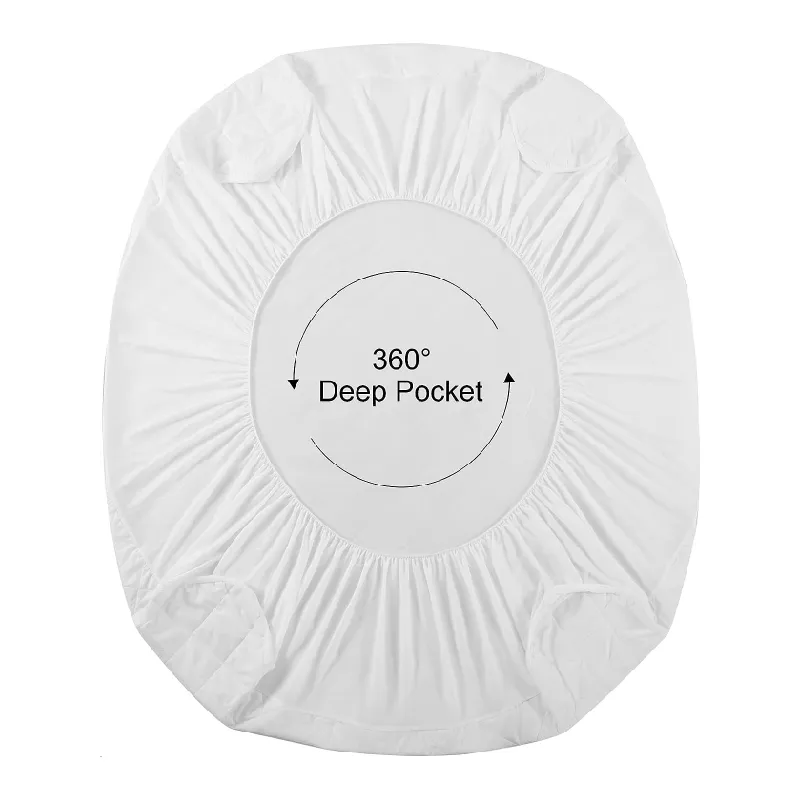
Customized Solutions and Application Case Studies
Tailored solutions are increasingly vital in the B2B bedding sector, enabling brands to align their bedsheets with specific aesthetic and functional requirements. Professional suppliers often provide extensive customization options for linen bed sheets, from specific weave patterns to bespoke sizing and branding.
Customization Capabilities:
- Color Matching: Custom dyeing to match corporate branding or interior design palettes.
- Weave & Texture: Options for different finishes, from rustic stonewashed to smoother, more refined linen.
- Size & Fit: Production of non-standard dimensions for unique mattresses or bedding ensembles.
- Embroidery & Branding: Integration of logos or custom patterns for a personalized touch, enhancing brand identity in hospitality.
- Thread Count/GSM Variations: Adjusting fabric density to meet specific durability or softness requirements.
Application Case Studies:
Case Study 1: Luxury Boutique Hotel Chain
A high-end boutique hotel chain sought to elevate its guest experience and differentiate its brand. They partnered with a specialized linen supplier to source custom linen bed sheets in a muted, signature color palette. The sheets were specified at a 185 GSM for optimal balance of softness and durability, with reinforced seams to withstand commercial laundering cycles.
Outcome: Guest satisfaction scores related to sleep comfort increased by 15%. The linen sheets, combined with a premium mattress protector, reduced energy consumption by minimizing the need for constant room temperature adjustments due to their natural breathability. Despite a higher initial investment, the projected lifespan of the linen sheets translated into a 30% reduction in bedding replacement costs over a five-year period compared to their previous cotton inventory. Customer feedback consistently highlighted the luxurious feel and natural comfort of the bedding.
Case Study 2: Eco-Conscious Wellness Retreat
An exclusive wellness retreat focused on holistic health and sustainability required bedding that aligned with its core values. They opted for GOTS-certified organic cotton sheets and OEKO-TEX certified linen bed sheets for different room categories, prioritizing hypoallergenic and chemical-free materials. The linen was chosen for its natural antibacterial properties and exceptional durability, ideal for frequent sanitization.
Outcome: The retreat successfully communicated its commitment to guest health and environmental responsibility, enhancing its brand image. The linen's robust nature proved highly resistant to repeated industrial washes, maintaining integrity and comfort for guests while reducing the environmental impact associated with frequent textile replacement.

Frequently Asked Questions (FAQ)
Q1: How do linen bed sheets compare in longevity to high thread count cotton?
A1: Linen fibers are significantly stronger than cotton fibers. While high thread count cotton offers softness, linen's inherent strength, particularly when wet, allows it to withstand more rigorous and frequent washing cycles typical of B2B applications. With proper care, linen sheets often last 2-3 times longer than quality cotton sheets, making them a more cost-effective long-term investment.
Q2: Are linen sheets suitable for all seasons?
A2: Yes, linen is an excellent thermoregulating fabric, making it suitable for year-round use. Its hollow fibers allow for excellent airflow, keeping sleepers cool and dry in warmer months by wicking away moisture. In cooler weather, linen's natural insulating properties provide warmth without excessive weight, adapting to the user's body temperature.
Q3: What certifications should I look for when purchasing luxury sheets or bulk sheet sets?
A3: For B2B procurement, look for suppliers with OEKO-TEX Standard 100 certification, which guarantees the textile is free from harmful substances. If sourcing organic linen or cotton, GOTS (Global Organic Textile Standard) is essential. European Flax certification ensures the linen is grown and processed in Western Europe, adhering to high environmental and social standards.
Q4: How does the initial investment in linen bedding compare to other options?
A4: The upfront cost for premium linen bed sheets can be higher than for conventional cotton. However, this initial investment is offset by linen's significantly longer lifespan, reduced need for replacement, and enhanced guest satisfaction. When calculating Total Cost of Ownership (TCO), linen often proves to be more economical in the long run.
Lead Time, Fulfillment, and Warranty Commitments
Understanding the logistical and support frameworks is critical for B2B partners. We pride ourselves on transparent and reliable service for all our textile solutions, including high-quality linen bed sheets.
Lead Time & Fulfillment:
- Standard Orders: For in-stock standard sizes and colors, lead times typically range from 2-4 weeks, depending on order volume and destination.
- Custom Orders: Customized solutions (special sizes, colors, branding) generally require 6-12 weeks from confirmed order and design approval, accounting for material sourcing, specialized production, and quality control.
- Shipping & Logistics: We offer flexible shipping options, including sea freight, air freight, and express courier services, managed by experienced logistics partners to ensure timely and secure delivery worldwide. Detailed tracking and communication are provided throughout the fulfillment process.
- Minimum Order Quantity (MOQ): MOQs vary by product and customization level; please contact our sales team for specific details on bulk bedsheets.
Warranty Commitments:
- Material & Workmanship: All our sheet sets are backed by a comprehensive 2-year warranty covering defects in material and workmanship under normal commercial use and care conditions.
- Durability Promise: We guarantee the structural integrity and performance of our linen fabrics against premature wear and tear when care instructions are followed. Any issues arising from manufacturing defects will be promptly addressed.
- Returns & Replacements: In the event of a warranted defect, we offer expedient replacement or repair of the product. Our customer support team will guide you through the process, ensuring minimal disruption to your operations.
Customer Support:
- Dedicated Account Managers: Each B2B client is assigned a dedicated account manager for personalized service, technical advice, and streamlined order management.
- Technical Assistance: Our team of textile experts provides support on product specifications, care guidelines, and application best practices to maximize the lifespan and performance of your bedding.
- Responsive Communication: We are committed to providing timely responses to all inquiries, with support available via phone, email, and a dedicated B2B portal.
Conclusion
The strategic adoption of high-quality linen bed sheets represents a sound investment for B2B enterprises seeking to enhance client experience, optimize operational costs, and align with global sustainability trends. From its robust manufacturing process, adherence to rigorous testing standards, and superior technical parameters to its diverse application advantages and customizable solutions, linen stands as a premium textile choice. By partnering with a reputable supplier offering comprehensive support and robust warranties, businesses can leverage the enduring appeal and performance of linen to achieve their commercial objectives and delight their discerning clientele.
References
- Grand View Research. "Bed Linen Market Size, Share & Trends Analysis Report By Material, By Application (Residential, Commercial), By Distribution Channel (Offline, Online), By Region, And Segment Forecasts, 2023 - 2030." July 2023.
- International Organization for Standardization (ISO). "ISO 9001 Quality management systems — Requirements." Latest Edition.
- OEKO-TEX Association. "OEKO-TEX Standard 100." Latest Edition.
- Global Organic Textile Standard (GOTS). "GOTS Standard." Version 6.0, 2020.
- ASTM International. "Standard Test Methods for Breaking Strength and Elongation of Textile Fabrics (Grab Test)." ASTM D5034.
- ASTM International. "Standard Test Method for Tearing Strength of Fabrics by Falling-Pendulum (Elmendorf) Apparatus." ASTM D1424.
-
Garment Washed Sheets Color Retention Prevents Fading After WashesNewsNov.14, 2025
-
Charcoal Bamboo Sheets Moisture-Wicking Property Enhances Sleep ComfortNewsNov.12, 2025
-
High Quality Satin Sheets Soft Touch Improves Hotel Guest ExperienceNewsNov.12, 2025
-
Poly Cotton Sheets Breathable Weave Reduces Skin Irritation For PatientsNewsNov.12, 2025
-
Microfiber Sheet Stain Resistant Feature Eases Hotel HousekeepingNewsNov.12, 2025
-
Polyester Cotton Bedding Durable Fabric Withstands Frequent Hotel WashesNewsNov.12, 2025
-
Microfiber Pillow Filling Even Distribution Prevents LumpingNewsNov.03, 2025
Luxury Linen Bed Sheets: Organic Comfort & Durable Quality
Introduction to High-Performance Linen Bed Sheets for B2B Applications
In the discerning B2B market, particularly within hospitality, healthcare, and high-end residential sectors, the choice of bedding materials significantly impacts guest satisfaction, operational longevity, and brand reputation. Among the premium options available, linen bed sheets stand out for their exceptional durability, thermal regulation properties, and distinctive aesthetic appeal. Derived from the flax plant, linen fabric offers a unique combination of strength and softness that improves with age and use, making it a compelling investment for businesses prioritizing comfort and sustainability. This comprehensive overview delves into the technical aspects, market dynamics, and operational benefits of incorporating high-quality linen bedding into diverse commercial environments, complementing other essential bedding accessories such as the Quilted Elastic Fitted Waterproof Mattress Protector, ensuring a complete and luxurious sleep solution.
The demand for natural, eco-friendly, and durable textiles is on a steady rise, positioning linen as a frontrunner in premium bedding. This article will provide a detailed exposition of the manufacturing processes, technical specifications, application advantages, and strategic considerations for B2B procurement of these superior linen bed sheets. We aim to equip decision-makers and procurement specialists with the insights necessary to make informed choices that enhance user experience and operational efficiency.
Industry Trends and Market Dynamics
The global bedding market is experiencing significant shifts driven by consumer preferences for sustainability, health, and luxury. Reports indicate a growing CAGR (Compound Annual Growth Rate) in the luxury bedding segment, with natural fibers leading the charge. Linen, with its inherent eco-friendly attributes and hypoallergenic properties, is perfectly positioned to capture this market expansion. According to Grand View Research, the global bed linen market size was valued at USD 25.56 billion in 2022 and is expected to grow at a CAGR of 6.2% from 2023 to 2030, with increasing demand for premium and personalized products.
Key trends influencing B2B procurement include:
- Sustainability & Traceability: Demand for materials with verifiable sustainable sourcing and manufacturing processes, such as OEKO-TEX certified linen or GOTS certified organic cotton sheets.
- Health & Wellness: Increased focus on hypoallergenic, antimicrobial, and breathable fabrics, benefiting linen's natural properties.
- Durability & Longevity: Businesses seek investments that withstand rigorous commercial laundering, reducing replacement cycles and overall cost of ownership. Linen’s inherent strength makes it an ideal choice for durable bedsheets.
- Luxury & Comfort: The rising expectation for premium experiences in hospitality and residential sectors drives the adoption of luxury sheets and high-quality sheet sets.
- Customization: Growing need for bespoke solutions in terms of size, color, weave, and branding for distinct establishments.

Manufacturing Process of Linen Bed Sheets
The production of high-quality linen bed sheets involves a meticulous series of steps, ensuring the fiber's natural characteristics are preserved and enhanced for textile applications. This process begins with the cultivation of flax plants and culminates in the finished fabric.
Process Flow Overview:
1. Flax Cultivation & Harvesting
Flax (Linum usitatissimum) is grown in temperate climates. Harvesting is typically done by pulling the entire plant from the ground, rather than cutting, to preserve the full length of the fibers.
↓2. Retting
A natural decomposition process (dew retting or water retting) that uses moisture and microorganisms to break down the pectin binding the fibers to the woody stalk. This is crucial for fiber separation.
↓3. Breaking & Scutching
Machines break the dried stalks, then scutching removes the woody parts (shives) from the long, fine linen fibers. Shorter fibers become tow, while longer fibers are line fibers.
↓4. Heckling & Spinning
Fibers are combed (heckled) to align them and remove impurities. These clean, parallel fibers are then spun into yarn, with various fineness levels for different fabric types.
↓5. Weaving
Linen yarns are woven into fabric on looms, typically using plain weave or twill weave patterns to create different textures and durability levels for bedsheets.
↓6. Finishing & Dyeing
Fabric undergoes processes like desizing, scouring, bleaching, mercerization (optional, for strength/luster), and dyeing. Strict quality control ensures colorfastness and fabric integrity.
↓7. Cutting & Sewing
The finished fabric is cut according to specific dimensions for flat sheets, fitted sheets, and pillowcases. Precision sewing ensures durable seams and accurate sizing for sheet sets.
Testing Standards: Throughout this process, adherence to international testing standards is paramount. Key standards include:
- ISO 9001: For quality management systems in manufacturing.
- OEKO-TEX Standard 100: Certifies that textiles are free from harmful substances, crucial for direct skin contact products like bedding.
- GOTS (Global Organic Textile Standard): For linen derived from organically grown flax, covering ecological and social criteria.
- ASTM D3776: Standard test method for mass per unit area (weight) of fabric.
- ASTM D1424: Standard test method for tear strength of fabrics.
- ASTM D5034: Standard test method for breaking strength and elongation of textile fabrics (grab test).
The service life of premium linen bed sheets, when properly cared for, can extend significantly beyond that of conventional cotton, often lasting 5-10 years even in commercial environments, showcasing its exceptional value.

Technical Parameters and Specifications
Understanding the technical specifications of linen bed sheets is vital for B2B clients to ensure product suitability for their intended application and to guarantee performance longevity. Linen fibers are characterized by their cellular structure, which contributes to their unique properties.
Key Material Characteristics:
- Cellulose Composition: Predominantly cellulose (around 70%), with smaller amounts of hemicellulose, pectin, and lignin. This gives linen its strength and absorbency.
- Fiber Length: Typically 20-50 cm, significantly longer than cotton fibers, contributing to yarn strength and minimal linting.
- Tenacity (Strength): Linen is one of the strongest natural fibers, particularly when wet (up to 20% stronger wet than dry), making it highly resistant to abrasion and tearing during washing.
- Moisture Regain: High moisture absorbency (up to 20% of its weight without feeling damp), excellent wicking properties, and quick-drying, promoting thermal comfort.
- Thermal Conductivity: Higher than cotton, leading to its characteristic cool feel in warm climates.
- Pilling Resistance: Excellent resistance to pilling due to long, smooth fibers.
- Hypoallergenic: Naturally resistant to dust mites, bacteria, and fungi, making it ideal for sensitive users.
Typical Product Specifications for Premium Linen Bed Sheets:
| Parameter | Specification for Premium Linen | Technical Rationale |
|---|---|---|
| Material Composition | 100% European Flax Linen | Ensures superior fiber quality and ethical sourcing, often certified. |
| GSM (Grams per Square Meter) | 160 - 200 GSM | Optimal balance of durability, breathability, and drape. Higher GSM for heavier, more robust sheets. |
| Yarn Count (Metric) | Nm 10-30 | Indicates yarn fineness; higher Nm means finer yarn, resulting in softer fabric. |
| Tensile Strength (Warp/Weft) | >400 N / >350 N (ASTM D5034) | Measures resistance to breaking under tension, critical for longevity in commercial use. |
| Tear Strength (Warp/Weft) | >30 N / >25 N (ASTM D1424) | Indicates resistance to tearing, important for industrial laundering and daily wear. |
| Pilling Resistance | Grade 4-5 (ISO 12945-2) | Excellent resistance means minimal fiber balls forming on the surface, maintaining aesthetic and comfort. |
| Shrinkage (Wash) | < 3% | Controlled shrinkage ensures consistent sizing after repeated industrial washes. |
| Colorfastness to Washing | Grade 4-5 (ISO 105-C06) | Maintains color integrity over many wash cycles, crucial for brand consistency. |

Technical Advantages in Application Scenarios
The superior technical characteristics of linen bed sheets translate into significant advantages across various B2B application scenarios, offering both tangible and intangible benefits.
Target Industries & Specific Benefits:
-
Hospitality (Luxury Hotels, Resorts, Boutique Accommodations):
Linen provides an unmatched guest experience through its luxurious feel, breathability, and distinctive aesthetic. Its natural temperature-regulating properties ensure comfort in diverse climates, reducing the need for excessive air conditioning or heating, thus contributing to energy saving. The exceptional durability reduces replacement costs and laundry strain compared to standard cotton options.
-
Healthcare (Premium Clinics, Wellness Centers):
Linen's inherent hypoallergenic and antimicrobial properties create a healthier sleeping environment, crucial for patient well-being. Its ability to withstand frequent high-temperature washing without degradation ensures superior hygiene and sterilization, critical for infection control. Furthermore, its smooth, non-irritating texture is gentle on sensitive skin.
-
High-End Residential Developments & Furnished Rentals:
For property developers and luxury rental providers, investing in luxury sheets like linen enhances the perceived value and comfort of the property. Its long service life and easy care reduce maintenance overheads for property management. The sophisticated, relaxed aesthetic of linen also aligns with modern interior design trends.
-
Retail (Specialty Bedding Stores, Interior Designers):
Offering linen bedding differentiates a retail business, catering to customers seeking premium, sustainable, and high-performance textiles. Its unique selling points, such as becoming softer with each wash and natural wrinkle, are attractive to discerning consumers.

Vendor Comparison: Linen vs. Other Premium Bedding Materials
When sourcing premium bedsheets for B2B applications, comparing material properties and vendor capabilities is crucial. While organic cotton sheets offer a soft and sustainable alternative, linen presents distinct advantages, especially in terms of durability and thermal regulation.
Comparative Analysis of Premium Bedding Materials:
| Feature | Linen Bed Sheets | Egyptian/Pima Cotton | Tencel/Lyocell |
|---|---|---|---|
| Fiber Source | Flax Plant | Cotton Plant | Eucalyptus Wood Pulp |
| Durability & Longevity | Excellent; strong, improves with age. 5-10+ years commercial life. | Very Good; depends on thread count and weave. 2-5 years commercial life. | Good; generally durable. 3-6 years commercial life. |
| Thermal Regulation | Exceptional; highly breathable, cooling in summer, insulating in winter. | Good; breathable, but can retain more heat than linen. | Very Good; moisture-wicking and breathable. |
| Softness & Texture | Crisp initially, softens significantly with each wash; characteristic relaxed drape. | Very soft, especially high thread counts; smooth. | Extremely soft, silky feel. |
| Hypoallergenic Properties | Naturally hypoallergenic, antimicrobial. | Can be, but less inherent resistance to dust mites/allergens. | Generally hypoallergenic. |
| Wrinkle Tendency | High, characteristic of natural linen. | Moderate to low, depending on weave and finish. | Low. |
| Sustainability Footprint | Low water/pesticide use, natural retting, highly biodegradable. | Higher water/pesticide use than linen (unless organic). | Closed-loop production, good sustainability. |
| Price Point (B2B) | High (initial investment) | Medium-High | Medium-High |
Vendor Selection Criteria:
When selecting a supplier for luxury sheets or bulk sheet sets, B2B clients should evaluate:
- Certifications: Look for OEKO-TEX Standard 100, GOTS, European Flax certification to ensure quality and ethical production.
- Experience & Specialization: Vendors with extensive experience in natural fibers and B2B textile supply understand commercial needs.
- Customization Capabilities: Ability to provide specific sizes, colors, weaves, and branding options.
- Lead Time & Logistics: Reliable supply chains and efficient fulfillment are critical for operational continuity.
- After-Sales Support: Clear warranty, return policies, and responsive customer service.

Customized Solutions and Application Case Studies
Tailored solutions are increasingly vital in the B2B bedding sector, enabling brands to align their bedsheets with specific aesthetic and functional requirements. Professional suppliers often provide extensive customization options for linen bed sheets, from specific weave patterns to bespoke sizing and branding.
Customization Capabilities:
- Color Matching: Custom dyeing to match corporate branding or interior design palettes.
- Weave & Texture: Options for different finishes, from rustic stonewashed to smoother, more refined linen.
- Size & Fit: Production of non-standard dimensions for unique mattresses or bedding ensembles.
- Embroidery & Branding: Integration of logos or custom patterns for a personalized touch, enhancing brand identity in hospitality.
- Thread Count/GSM Variations: Adjusting fabric density to meet specific durability or softness requirements.
Application Case Studies:
Case Study 1: Luxury Boutique Hotel Chain
A high-end boutique hotel chain sought to elevate its guest experience and differentiate its brand. They partnered with a specialized linen supplier to source custom linen bed sheets in a muted, signature color palette. The sheets were specified at a 185 GSM for optimal balance of softness and durability, with reinforced seams to withstand commercial laundering cycles.
Outcome: Guest satisfaction scores related to sleep comfort increased by 15%. The linen sheets, combined with a premium mattress protector, reduced energy consumption by minimizing the need for constant room temperature adjustments due to their natural breathability. Despite a higher initial investment, the projected lifespan of the linen sheets translated into a 30% reduction in bedding replacement costs over a five-year period compared to their previous cotton inventory. Customer feedback consistently highlighted the luxurious feel and natural comfort of the bedding.
Case Study 2: Eco-Conscious Wellness Retreat
An exclusive wellness retreat focused on holistic health and sustainability required bedding that aligned with its core values. They opted for GOTS-certified organic cotton sheets and OEKO-TEX certified linen bed sheets for different room categories, prioritizing hypoallergenic and chemical-free materials. The linen was chosen for its natural antibacterial properties and exceptional durability, ideal for frequent sanitization.
Outcome: The retreat successfully communicated its commitment to guest health and environmental responsibility, enhancing its brand image. The linen's robust nature proved highly resistant to repeated industrial washes, maintaining integrity and comfort for guests while reducing the environmental impact associated with frequent textile replacement.

Frequently Asked Questions (FAQ)
Q1: How do linen bed sheets compare in longevity to high thread count cotton?
A1: Linen fibers are significantly stronger than cotton fibers. While high thread count cotton offers softness, linen's inherent strength, particularly when wet, allows it to withstand more rigorous and frequent washing cycles typical of B2B applications. With proper care, linen sheets often last 2-3 times longer than quality cotton sheets, making them a more cost-effective long-term investment.
Q2: Are linen sheets suitable for all seasons?
A2: Yes, linen is an excellent thermoregulating fabric, making it suitable for year-round use. Its hollow fibers allow for excellent airflow, keeping sleepers cool and dry in warmer months by wicking away moisture. In cooler weather, linen's natural insulating properties provide warmth without excessive weight, adapting to the user's body temperature.
Q3: What certifications should I look for when purchasing luxury sheets or bulk sheet sets?
A3: For B2B procurement, look for suppliers with OEKO-TEX Standard 100 certification, which guarantees the textile is free from harmful substances. If sourcing organic linen or cotton, GOTS (Global Organic Textile Standard) is essential. European Flax certification ensures the linen is grown and processed in Western Europe, adhering to high environmental and social standards.
Q4: How does the initial investment in linen bedding compare to other options?
A4: The upfront cost for premium linen bed sheets can be higher than for conventional cotton. However, this initial investment is offset by linen's significantly longer lifespan, reduced need for replacement, and enhanced guest satisfaction. When calculating Total Cost of Ownership (TCO), linen often proves to be more economical in the long run.
Lead Time, Fulfillment, and Warranty Commitments
Understanding the logistical and support frameworks is critical for B2B partners. We pride ourselves on transparent and reliable service for all our textile solutions, including high-quality linen bed sheets.
Lead Time & Fulfillment:
- Standard Orders: For in-stock standard sizes and colors, lead times typically range from 2-4 weeks, depending on order volume and destination.
- Custom Orders: Customized solutions (special sizes, colors, branding) generally require 6-12 weeks from confirmed order and design approval, accounting for material sourcing, specialized production, and quality control.
- Shipping & Logistics: We offer flexible shipping options, including sea freight, air freight, and express courier services, managed by experienced logistics partners to ensure timely and secure delivery worldwide. Detailed tracking and communication are provided throughout the fulfillment process.
- Minimum Order Quantity (MOQ): MOQs vary by product and customization level; please contact our sales team for specific details on bulk bedsheets.
Warranty Commitments:
- Material & Workmanship: All our sheet sets are backed by a comprehensive 2-year warranty covering defects in material and workmanship under normal commercial use and care conditions.
- Durability Promise: We guarantee the structural integrity and performance of our linen fabrics against premature wear and tear when care instructions are followed. Any issues arising from manufacturing defects will be promptly addressed.
- Returns & Replacements: In the event of a warranted defect, we offer expedient replacement or repair of the product. Our customer support team will guide you through the process, ensuring minimal disruption to your operations.
Customer Support:
- Dedicated Account Managers: Each B2B client is assigned a dedicated account manager for personalized service, technical advice, and streamlined order management.
- Technical Assistance: Our team of textile experts provides support on product specifications, care guidelines, and application best practices to maximize the lifespan and performance of your bedding.
- Responsive Communication: We are committed to providing timely responses to all inquiries, with support available via phone, email, and a dedicated B2B portal.
Conclusion
The strategic adoption of high-quality linen bed sheets represents a sound investment for B2B enterprises seeking to enhance client experience, optimize operational costs, and align with global sustainability trends. From its robust manufacturing process, adherence to rigorous testing standards, and superior technical parameters to its diverse application advantages and customizable solutions, linen stands as a premium textile choice. By partnering with a reputable supplier offering comprehensive support and robust warranties, businesses can leverage the enduring appeal and performance of linen to achieve their commercial objectives and delight their discerning clientele.
References
- Grand View Research. "Bed Linen Market Size, Share & Trends Analysis Report By Material, By Application (Residential, Commercial), By Distribution Channel (Offline, Online), By Region, And Segment Forecasts, 2023 - 2030." July 2023.
- International Organization for Standardization (ISO). "ISO 9001 Quality management systems — Requirements." Latest Edition.
- OEKO-TEX Association. "OEKO-TEX Standard 100." Latest Edition.
- Global Organic Textile Standard (GOTS). "GOTS Standard." Version 6.0, 2020.
- ASTM International. "Standard Test Methods for Breaking Strength and Elongation of Textile Fabrics (Grab Test)." ASTM D5034.
- ASTM International. "Standard Test Method for Tearing Strength of Fabrics by Falling-Pendulum (Elmendorf) Apparatus." ASTM D1424.
-
Garment Washed Sheets Color Retention Prevents Fading After WashesNewsNov.14, 2025
-
Charcoal Bamboo Sheets Moisture-Wicking Property Enhances Sleep ComfortNewsNov.12, 2025
-
High Quality Satin Sheets Soft Touch Improves Hotel Guest ExperienceNewsNov.12, 2025
-
Poly Cotton Sheets Breathable Weave Reduces Skin Irritation For PatientsNewsNov.12, 2025
-
Microfiber Sheet Stain Resistant Feature Eases Hotel HousekeepingNewsNov.12, 2025
-
Polyester Cotton Bedding Durable Fabric Withstands Frequent Hotel WashesNewsNov.12, 2025
-
Microfiber Pillow Filling Even Distribution Prevents LumpingNewsNov.03, 2025

